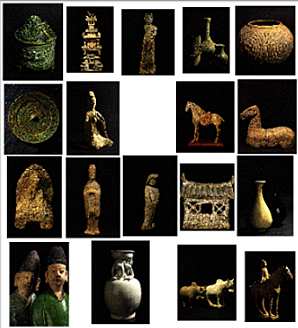Forget our criteria! If one were to approach Chinese art, be it only for an overview, it is essential to free oneself of all forms of ethnocentrism. The "sacralization" of the artist, "art for art's sake", are Western concepts. For the Chinese, man means little; he is a transient fragment in the immensity of the universe, of which he symbiotically feels the harmony. The harmony of sky and earth, mountains and clouds, rocks and streams, trees and flowers, is based on the inherent duality of the polar and concomitant Yin and Yang (literally shadow and light). This way of thinking is etched on the Chinese soul as far back in time as one can go. Traces can be found in oracular inscriptions on bones and turtle shells from the 13th century BC; it constitutes the common foundation of Taoism, Confucianism and even Ch'an Buddhism.
It thus becomes evident that the Chinese aesthetic criteria cannot be superimposed on ours. Artistic creations are arranged in accordance with a hierarchy which takes into account their link with the sole spirit capable of expressing the world's harmony. Thus, only writing -- calligraphy and poetry; painting, -- their illustration; and music -- their auditory form, are deemed to be "gratuitous" arts, practiced for their own sake and authentic. Architecture, sculpture, ceramics, jade or stone carving and goldsmithing are the works of artisans; they are the products of a commission. The fact that the works could have a future use, ritual or religious, does not change their status.
However, if spirituality preserves the primacy, the materials, tangible manifestations of Nature, are no less exalted: wood, solid stone, bronze, silk, paper, and so many more, so many media which can express this harmony and of which certain, by virtue of their fragility, recall the illusory quest for the perpetual in the ephemeral.
Within the scope of what we are looking at today, it will be precisely this "commissioned art" which we shall discuss. The "spirit" will not, however, be absent: in the same way that it preceded the choice of each of this collection's pieces, it will guide us through this journey by dotting it with short poems selected by Jacques-Edouard Berger to start his lectures.
Timeline:
